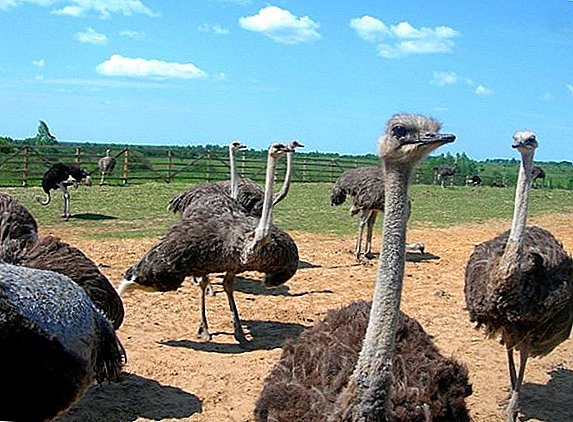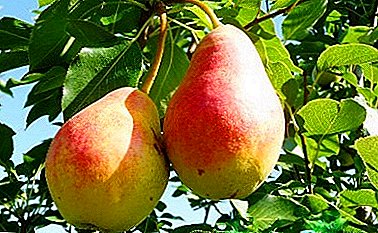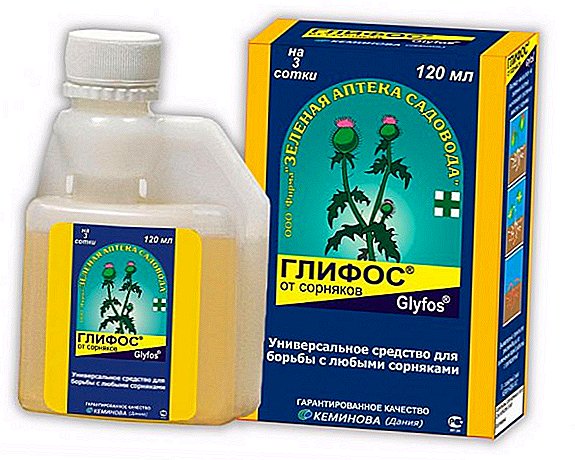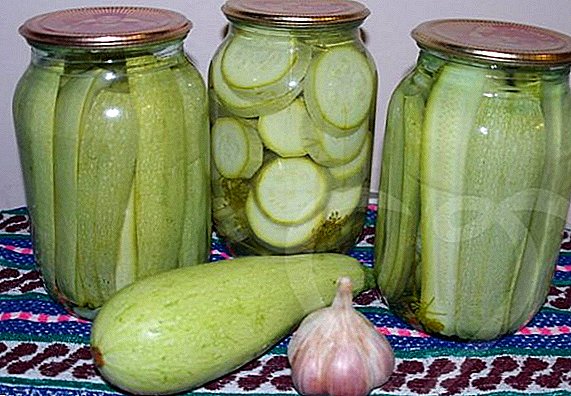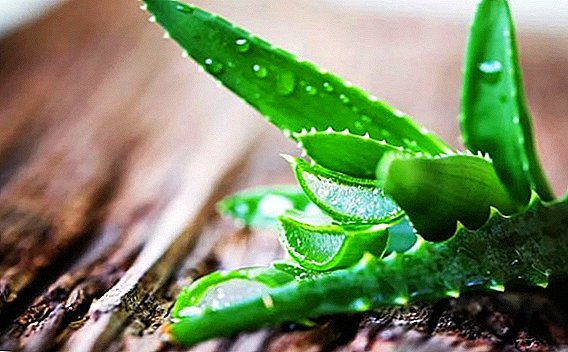 Aloe - a unique plant that can be safely called a home green pharmacy. Unfortunately, the plant over the years produces its vital resource, and there is a need for "rejuvenation" or for obtaining new specimens. The article will discuss the ways of succulent reproduction at home.
Aloe - a unique plant that can be safely called a home green pharmacy. Unfortunately, the plant over the years produces its vital resource, and there is a need for "rejuvenation" or for obtaining new specimens. The article will discuss the ways of succulent reproduction at home.
Description of the plant and its historical background
Aloe, in conversational use "agave" - is a representative of the asphodeal family. The birthplace of the flower is South Africa. Based on historical data, in Egypt, a few thousand years ago, the process of cultivating aloe began. Botanist scientists have about 400 varieties of aloe that grow on all continents (except Antarctica). As an industrial raw material for the needs of the pharmaceutical, cosmetic, food industries, the medicinal plant is grown in countries and regions with a tropical and subtropical climate. 
Agave, growing at home, is a succulent with thick, juicy leaves growing one above the other, with spikes on the edges. At room cultivation does not bloom. The “old” leaves have lower medicinal properties - lower or middle. In pots can grow up to twenty years.
Did you know? Aloe - a plant that is useful to have in the house. Succulent Hinders the Development and Spread staphylococcal and streptococcal infections, herpes viruses and influenza, E. coli.
Preparatory work
The substrate for cultivation of aloe is used industrial, special for the cultivation of cacti and succulents, additionally adding coal and a little finely crushed red brick. The soil mixture can be compiled independently, using one part of sand, humus, leaf soil and two parts of sod land. As in the finished soil, you should add brick and coal chips. The acidity of the earth mixture is neutral or slightly acid. Aloe does not need to be watered frequently, the soil must be breathable, otherwise the flower will stop growing and the process of decay may begin.
Recommend the components of the soil before mixing to disinfect in this way:
- earth and sand for an hour calcined on a baking sheet in the oven;
- the drainage material is washed, immersed in a solution of potassium permanganate for several hours, and then calcined in an oven.

Breeding methods
In nature, aloe breeds exclusively with the help of seeds or young growth. How to propagate aloe in room conditions - this will be discussed below.
Read more about planting, care and reproduction of aloe.
Leaf dilution
Deciding to use the method of breeding aloe leaves, you should follow the algorithm:
- separate the leaf as close as possible to the stem of an adult plant;
- for several days, the sheet is placed on a clean surface in a darkened place to dry the cut;
- powder sheet cut coal powder;
- a leaf is added to the sandy wet mixture to a depth of 3 cm;
- leave the leaf in the sand until rooting occurs. The sand must be constantly moist.

Method of cutting
Aloe, in most cases, propagated by cuttings, that is, by means of lateral shoots.
For this:
- cut the stalk or several pieces as close as possible to the base;
- immerse the cut in crushed charcoal;
- in a dark place, leave the cutting for 5 days to dry;
- in the sand for 1 cm deepen the cutting. If there are several cuttings, maintain a distance of 5 cm from each other;
- make sure that the sand stays constantly wet;
- Sow seedlings rooted in the sand into separate pots of small size.

With the help of the tops
Fans of indoor succulents prefer to breed agave apex.
With this method it is necessary:
- cut the tip with 7-8 leaves with a sharp knife (blade);
- immerse the cut part of the plant in a vessel with filtered water at room temperature;
- after the emergence of a sufficient number of roots, move the seedling into the prepared pot with the soil.
Video: Aloe Breeding
Seeds
Is it possible to propagate aloe at home with seeds? Yes you can.
This requires the following actions:
- at the end of February - the beginning of March, seeds are planted in the harvested, moistened and decontaminated land (without adding brick dust and coal);
- after the appearance of seedlings, carefully transplanted into small individual containers filled with the same soil;
- after some time, when the plants are formed, they are transplanted into larger pots for further growth.

Proper placement and care features
Aloe is a light-loving plant, therefore it is advisable to place the container with plants on the southern window-sill or in rooms with the longest possible daylight hours. In a darkened room, the plant will not die, but the color of the leaves will be pale green, the stem is thin, elongated. Periodically, the plant can be carried out to open space (balcony, terrace), while excluding the ingress of precipitation on aloe.
In the summer months, watering is moderate, with water at room temperature, and in winter, watering is practically stopped. The lack of moisture affects the condition of the sheet - it becomes thinner. Watering is best done through the pan, since the thin roots, through which the plant feeds, are located at the very bottom.
Important! Water in the sump should not stagnate. Half an hour after watering the excess water is drained.
Fertilizing is necessary in the summer and spring, once every 30 days. Mineral fertilizers are used for succulents and cacti.
Pests and diseases
Aloe rarely suffers from pests and diseases at home. But sometimes an insect appears - a scythe. The fight against it is to wipe the sheet plate with a solution of soap.
Recommendations for the use of plants
Aloe over the centuries is perhaps the most used domestic medicinal plant. Due to the unique chemical composition, healing juice helps the body to cope with many ailments. 
In folk medicine
The spectrum of use of agave in traditional medicine is wide. It is worth paying attention to several options "ambulance" with the use of home plants.
- Aloe juice helps with the common cold. It is necessary to squeeze the juice from the cut leaf and bury 2 drops in the nasal passage.
- Diseases of the throat helps to heal the juice diluted with water (1: 1), with which they gargle the throat, and then drink warm milk with a teaspoon of agave juice.
- A small fragment of aloe leaf embedded in the cavity of the tooth will relieve toothache.
- When a herpetic eruption appears, it is recommended to lubricate the wounds with aloe juice five times a day. Juice should be fresh.
- The prepared ointment on the basis of juice with the addition of honey (in equal parts) and a spoon of medical alcohol, is used as a healing ointment for wounds, fistulas, ulcers.
- Aloe juice is recommended to add to shampoos, lotions, cream, as it is an excellent natural moisturizer.
Important! For medicinal purposes, use parts and juice only "old" plants, whose age is not less than three years.
In cosmetology
The plant grown on an industrial scale is the raw material for the cosmetic industry, pharmaceuticals. 
Based on it, a large number of drugs have been created, the use of which helps in solving a wide range of problems, since:
- It has a pronounced moisturizing effect, does not cause a feeling of "tightness" of the skin, does not "clog" the pores.
- Gels, which include, juice agave, help in the treatment of acne. Juice has antibacterial and anti-inflammatory effects, heals wounds. Regular use of lotions with aloe prevents acne.
- It is an indispensable tool in solving "age" skin problems. Due to the high content of vitamins E and C, microelements, masks and creams have a beneficial effect on skin tone. Stimulates the production of additional elastin and collagen, which is important for the prevention and control of skin wilting and wrinkles.
- Helps prevent baldness, stimulates hair growth from dormant bulbs. The density of the scalp increases.
Did you know? Aloe juice is the only natural substance that penetrates all layers of the skin.
Agave, growing at home, especially the "old" age, does not have aesthetic advantages over many decorative indoor plants, but if you take into account its beneficial properties for the human body and a positive impact on the environment, it makes sense to "start" this beautiful plant on the windowsill . In addition, to multiply it, if necessary, is not at all difficult.







